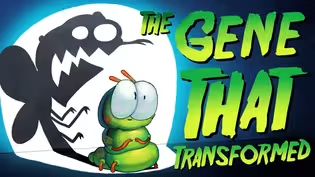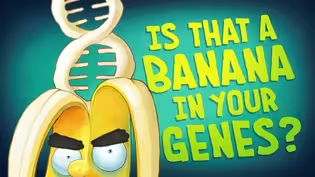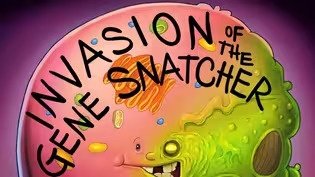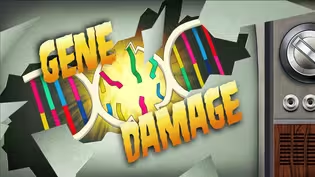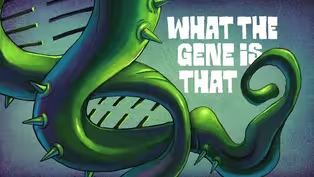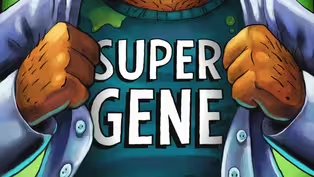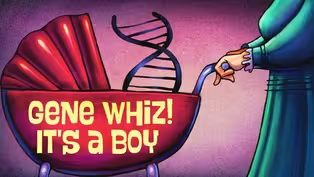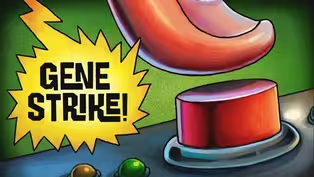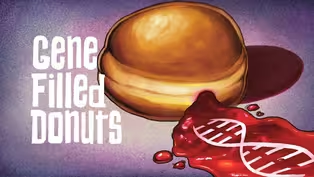
The Gene Explained | Good Genes Gone Bad
Special | 2m 58sVideo has Closed Captions
What causes cancer and ways to calm down those "good genes that have gone bad."
In this episode, we visit Liver Town to see how a few over-active cells can ruin a perfectly good neighborhood. We look at the causes for this disease, commonly known as cancer, and mention a couple of ways to calm down those good genes that have gone bad.
Problems playing video? | Closed Captioning Feedback
Problems playing video? | Closed Captioning Feedback
Funding for KEN BURNS PRESENTS THE GENE: AN INTIMATE HISTORY has been provided by Genentech, 23andMe, Cancer Treatment Centers of America, Alfred P. Sloan Foundation, Gray Foundation, American Society of...

The Gene Explained | Good Genes Gone Bad
Special | 2m 58sVideo has Closed Captions
In this episode, we visit Liver Town to see how a few over-active cells can ruin a perfectly good neighborhood. We look at the causes for this disease, commonly known as cancer, and mention a couple of ways to calm down those good genes that have gone bad.
Problems playing video? | Closed Captioning Feedback
How to Watch The Gene
The Gene is available to stream on pbs.org and the free PBS App, available on iPhone, Apple TV, Android TV, Android smartphones, Amazon Fire TV, Amazon Fire Tablet, Roku, Samsung Smart TV, and Vizio.
Buy Now
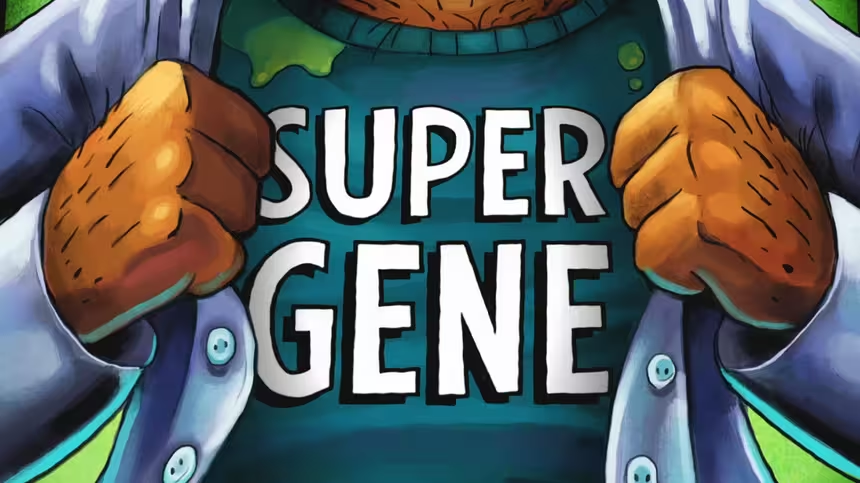
The Gene Explained
What the heck is a gene, anyway? This animated series won’t get you a PhD, but it does clear up a few mysteries about how genes work and what they might look like in the future. (Microscope not required.)More from This Collection
The Gene Explained | The Gene That Transformed
Video has Closed Captions
What terrifying things go on inside of chrysalis, and what dark role do genes play? (3m 9s)
The Gene Explained | Is That a Banana in Your Genes?
Video has Closed Captions
Humans are indeed genetically related to bananas (as well as slugs), but how exactly? (3m 21s)
The Gene Explained | Invasion of the Gene Snatchers
Video has Closed Captions
How do viruses work? Sort of like an alien invasion that replaces our cell’s genetic code. (3m 1s)
The Gene Explained | Gene Damage
Video has Closed Captions
What goes on in our DNA to make us grow grey hair, wrinkles and less than healthy DNA? (3m 25s)
The Gene Explained | A Big Wooly Gene
Video has Closed Captions
In this episode, we delve into the difficulties of resurrecting extinct animals. (3m)
The Gene Explained | What the Gene Is That?
Video has Closed Captions
See how scientists are expanding the DNA alphabet & what to look for in the search for E.T (3m 6s)
The Gene Explained | Super Gene
Video has Closed Captions
See what happens if DNA code gets deleted, put in the wrong place, or switched. (2m 58s)
The Gene Explained | Gene Whiz! It's a Boy!
Video has Closed Captions
If you're curious about the origin of boys, look no further than the Y chromosome. (2m 49s)
The Gene Explained | Gene Strike!
Video has Closed Captions
Take a peek into the body's war room during the heat of battle with cancer. (2m 24s)
The Gene Explained | Gene Filled Donuts
Video has Closed Captions
How DNA's mysterious instructions buried in a gene become the actual nose on a face. (2m 14s)
Providing Support for PBS.org
Learn Moreabout PBS online sponsorship(upbeat music) - [Narrator] Welcome to Liver Town!
A beautiful suburb, nestled in the Greater Body Metropolitan area.
(laughs) Here, each and every one of the 240 billion liver cells constantly work to keep their town healthy.
Work that is supervised by the Genetic Planning Authority and its two construction crews.
The go crew starts growth so the city can thrive.
And the stop crew stops growth so there's not overcrowding.
It is, all in all, a well-run, oh no!
It looks like there's trouble starting over there on lot 73A!
Oh, let's take a closer look to see what's going wrong.
When it's time for a cell to grow, the go crew gets to work.
Aw, but if the instructions are damaged, they don't know when to stop.
The cell grows out of control, and we could be watching the beginnings of cancer.
I know.
So, how do instructions get damaged?
Well, before it divides, each cell must carefully copy its DNA to pass to its daughter cell.
Usually, the cell makes an accurate copy.
But when six billion base pairs must be copied quickly, there's bound to be a few mistakes that slip through and bang!
A mutation.
That's not the only way mutations can occur.
Some happen from radiation like sunlight, or toxins like cigarette smoke.
(wheezes) Some mutations we inherit.
And some happen when the stop crew is broken.
And a damaged cell keeps splitting into more damaged cells, crowding neighbors, stealing resources, and making this once-beautiful town a dangerous place.
(gasps) So how do we fix all this?
Well, well one way is chemotherapy.
(explosion booms) That's like a nuclear strike that kills not only the bad cells, but a lot of the good cells, too.
A more strategic method is to read the broken DNA of a bad cell to determine a treatment that will only remove that cell.
So clever.
Another is to read the whole body's genetic makeup to keep a lookout for any likely cancers, and treat it before any harm to this lovely, peaceful little town.
(chuckles) (gentle jazzy music)
Support for PBS provided by:
Funding for KEN BURNS PRESENTS THE GENE: AN INTIMATE HISTORY has been provided by Genentech, 23andMe, Cancer Treatment Centers of America, Alfred P. Sloan Foundation, Gray Foundation, American Society of...

